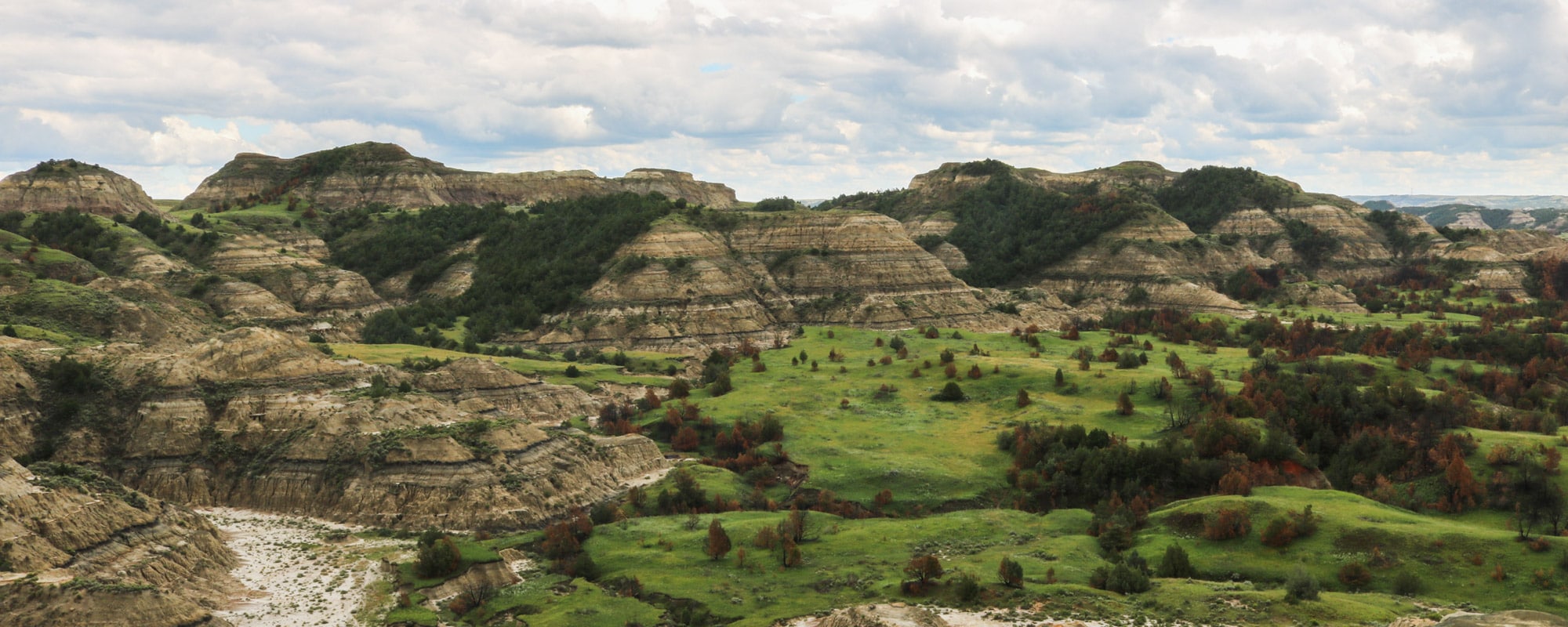The only national park named after an American president, Theodore Roosevelt National Park is home to bison and prairie dogs, badlands and rivers, and historic sites like Roosevelt’s own Maltese Cross Cabin.
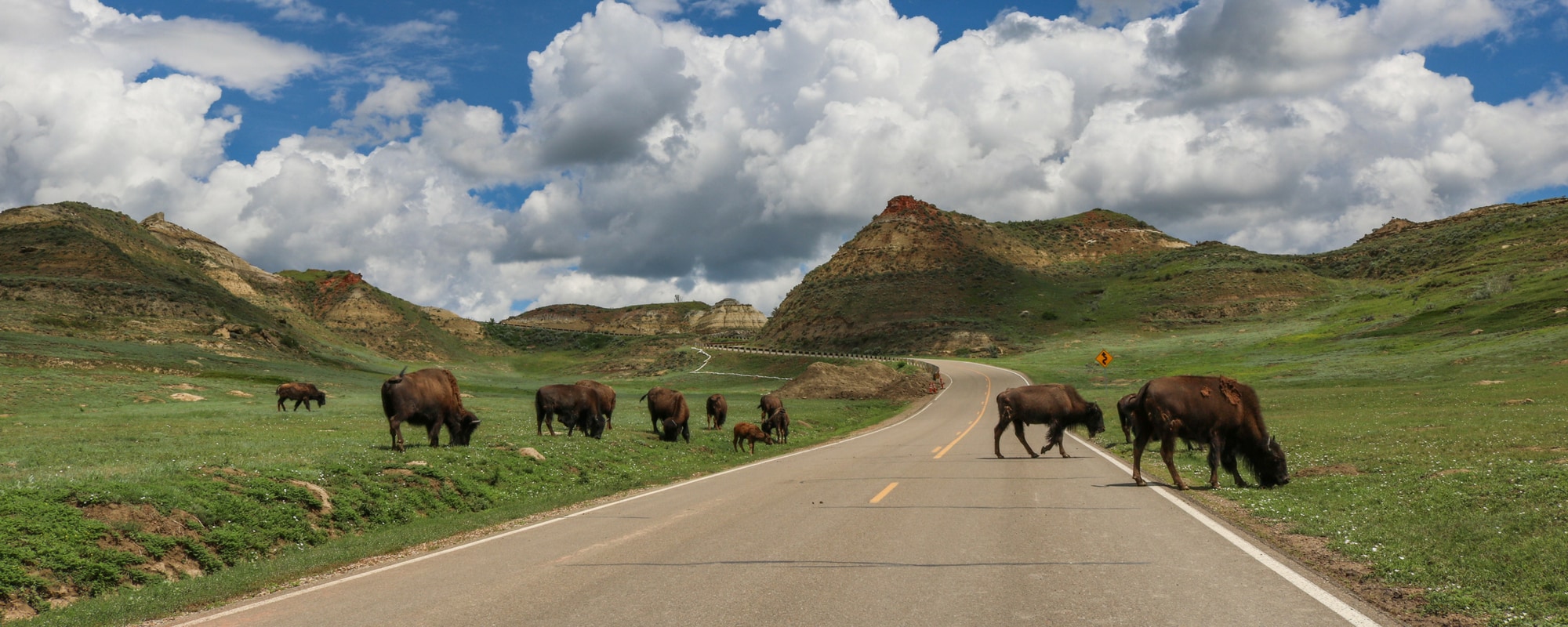
Named after one of greatest presidents in United States history, North Dakota’s Theodore Roosevelt National Park is one of the prime examples of wildlife conservation in the country.
Just like the man himself would have wanted it. Made up of three separate units (the South Unit, North Unit and Roosevelt’s Elkhorn Ranch), it is a fantastic place for scenic drives and hikes, and encounters with wild animals in their natural habitat.
Situated in the heart of the North Dakota prairies, the park protects a magnificent landscape of endless grasslands and lush badlands, well-kept almost like a golf course by grazing herbivores like bison, wild horses and elk.
When a young Theodore Roosevelt came to hunt bison in these lands in 1883, he quickly developed a deep love for both the outdoors lifestyle and the landscape. That love would never leave him during his lifetime, eventually influencing his policies as President.
After he lost both his wife and mother on the same fateful Valentine’s Day in 1884, he returned to the region to mourn and to immerse himself in solitude and the vastness of the landscape. He became a cattle rancher for a while, in the meantime finding purpose, healing and—most of all—adventure.
It is this passion for the great outdoors that shaped his focus on conservation later on in his life.
During his time in the White House, as America’s 26th President, Roosevelt passed the ever-so-important Antiquities Act and created the U.S. Forest Service. He also designated 150 national forests, more than 50 bird reserves and five new national parks.
Theodore Roosevelt National Park was not established by Teddy himself, though—that would have been an uncharacteristic show of arrogance—but dedicated in 1947.
It was designated a national memorial park (the first and only one of its kind in the country) to honor him and his priceless contributions to the conservation of America’s landscapes, culture and historic sites.
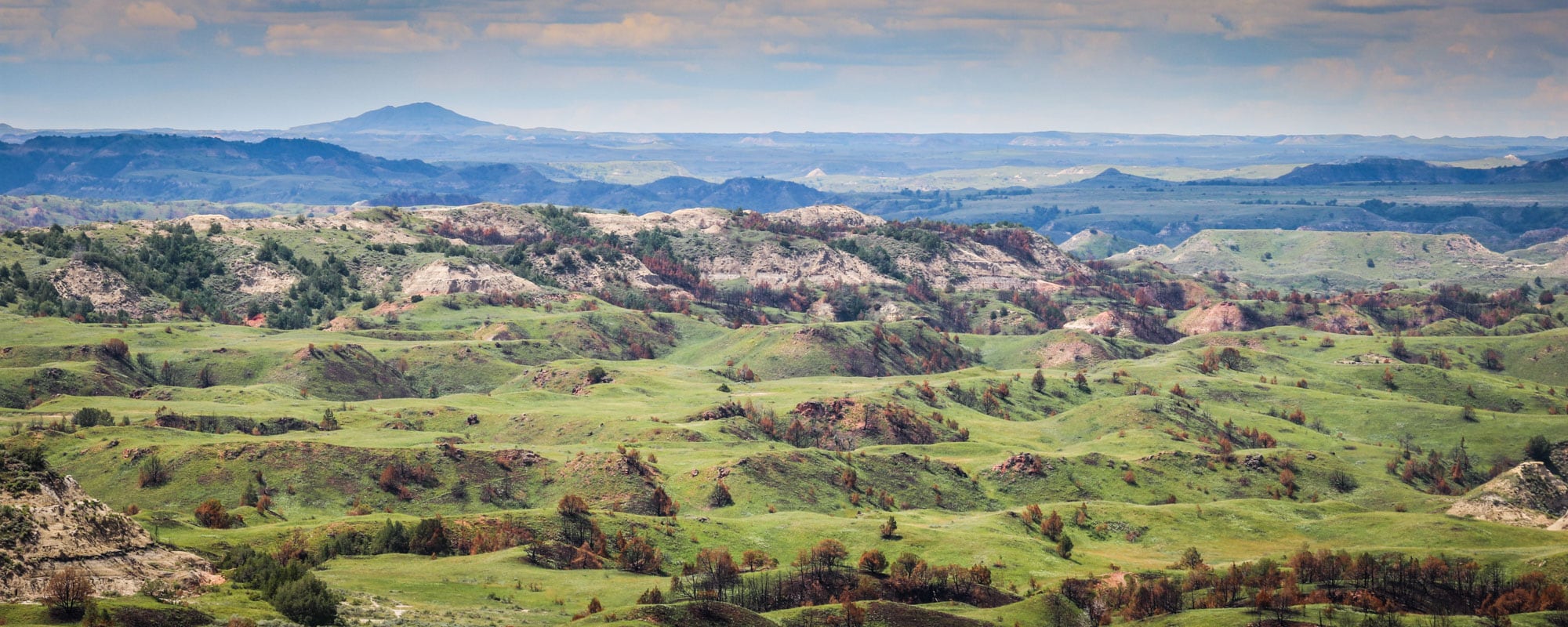
This Theodore Roosevelt National Park information page contains affiliate links. You can read more about our Terms of Use / Disclosure here.
Highlights of Theodore Roosevelt National Park (South Unit)
This page is dedicated to only the South Unit of Theodore Roosevelt National Park, since it’s the only unit I have visited (so far).
I can tell you, though, that it makes for a perfect stop on any cross-country drive. Please do this gorgeous park justice and spend at least one full day and one night.
Mandatory things to do in Theodore Roosevelt National Park’s South Unit include driving the Scenic Loop Drive, hitting some of the shorter trails and, most importantly, keeping your eyes peeled for wildlife.
When driving or cycling through the park, sightings of American bison grazing in the valleys are pretty much guaranteed. Another common sight is wild mustangs (horses), which roam the plains in smaller groups, while prairie dog towns are abundant all over the park.
If you’re especially lucky, you may even catch a glimpse of pronghorn, bighorn sheep, a coyote or elk.
- Scenic Loop Drive – Looping through the heart of the South Unit, through the badlands and prairies, the 36-mile (58-kilometer) Scenic Loop Drive is one of the most scenic national park drives in the USA. Starting just outside the Medora Visitor Center, the road leads past most main attractions in the South Unit of Theodore Roosevelt National Park.
- Bison Sightings – Home to countless animal species, Theodore Roosevelt National Park is particularly well-known for its large herds of. They are the undeniable stars of the wildlife show in the park. When driving the Scenic Loop Drive, you’re pretty much certain to spot them.
- Boicourt Trail – This is my favorite short hike in Theodore Roosevelt National Park’s South Unit. It lies more or less halfway on the Scenic Loop Drive and takes you to a 360-degree view of the prairies and badlands below.
- Sunset at Wind Canyon – Catching a sunset at Wind Canyon is one of the best things to do in Theodore Roosevelt National Park. This is another great little trail that leads along a cliff edge and provides striking views of the Little Missouri River.
- Prairie Dog Towns – The industrious prairie dogs live in extensive “towns” made up of dozens of burrows. The Scenic Loop Drives passes right through three prairie dogs towns, so you’ll certainly have a chance to see these industrious animals from up close.
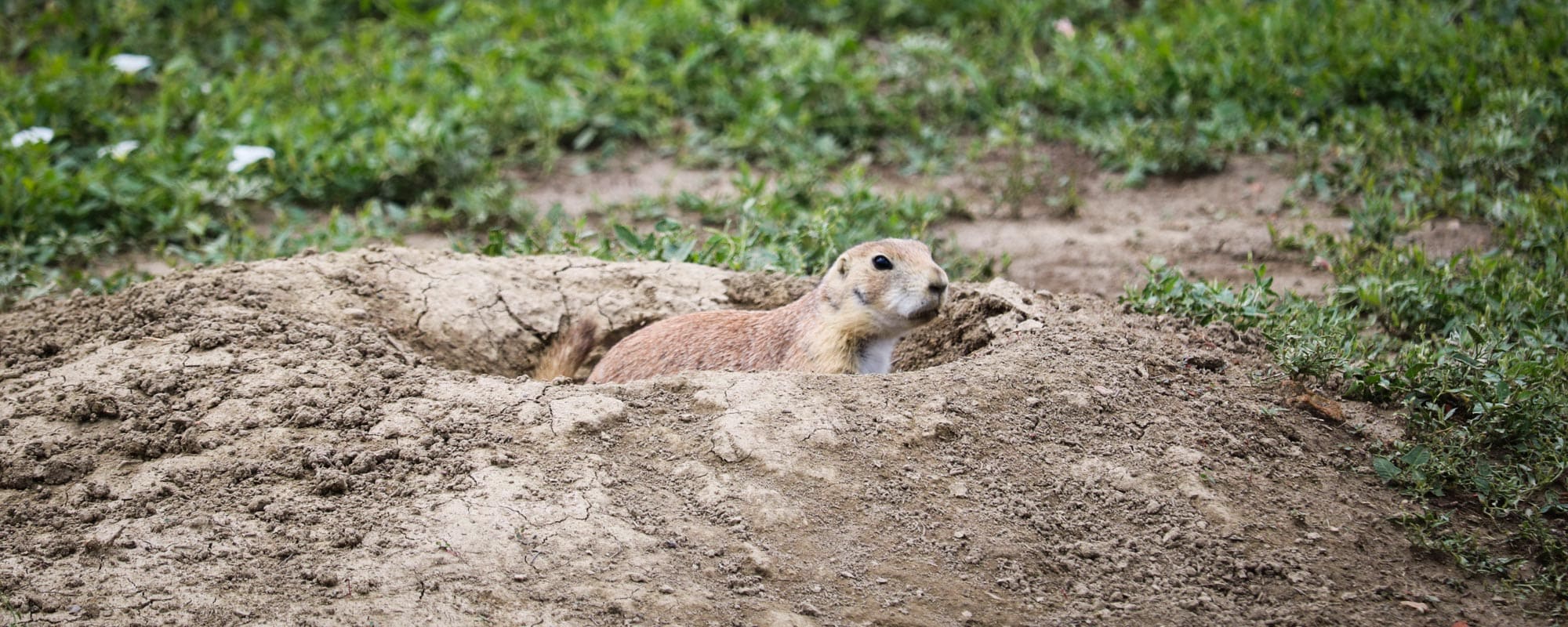
Accommodation Near Theodore Roosevelt National Park
Camping is the only type of accommodation you’ll find within the park’s boundaries.
If you’re looking for a bit more luxury, you can find excellent inns and hotels in the small Old West town of Medora, just outside the South Unit. Check below for accommodation around the national park.
Booking.com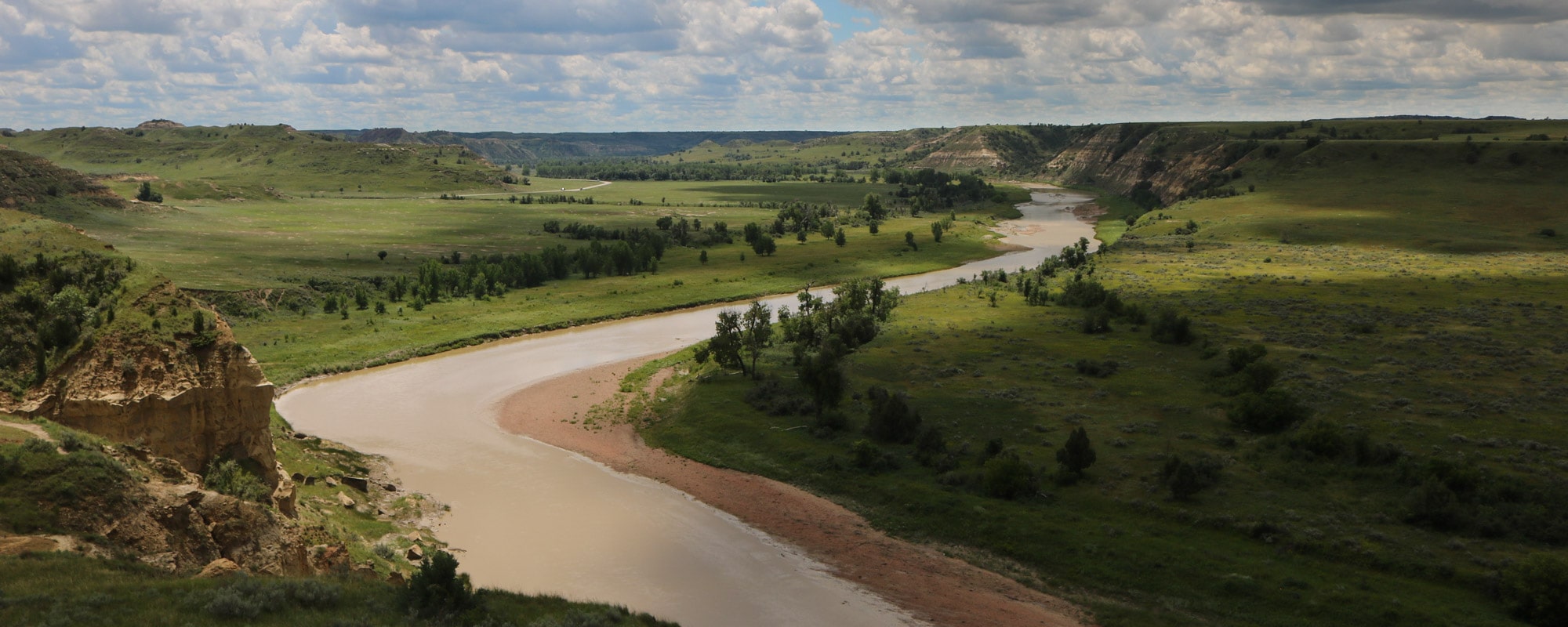
Useful Info
Location: Western North Dakota
Nearest Town: Medora
Area: 110.1 square miles (70,446.89 acres)
Annual Visitors (2022): 668,679
Features: Badlands and rolling prairie, historic ranches, abundant wildlife
Top Attractions (South Unit): Herds of American bison and horses, prairie dog towns, Wind Canyon, Little Missouri River, Boicourt Overlook and Trail, Ridgeline Trail, Maltese Cross Cabin
Popular Activities: Hiking, scenic driving, wildlife watching, cycling, camping, horseback riding, kayaking/canoeing
Suggested Stay: 2 days
Campgrounds:
- Cottonwood Campground (South Unit, 76 sites)
- Juniper Campground (North Unit, 50 sites)
More Information: National Park Service
Nearby National Parks:
- Badlands National Park, South Dakota
- Wind Cave National Park, South Dakota
- Grand Teton National Park, Wyoming
- Yellowstone National Park, Wyoming, Montana & Idaho
